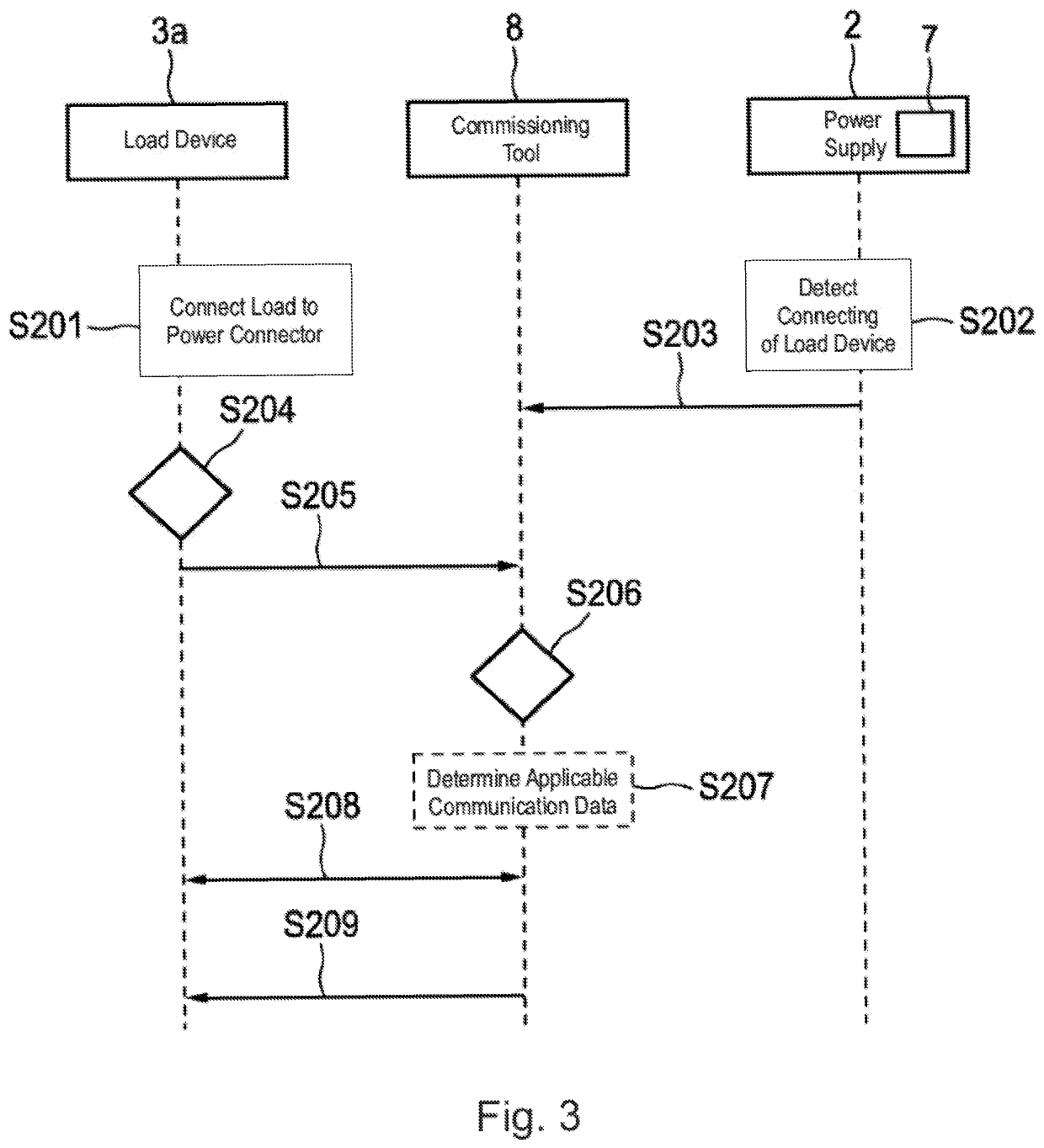Supporting the commissioning of a networked power distribution system
a networked power distribution and networked technology, applied in the integration of power network operation systems, data switching current supply, data switching details, etc., can solve the problems of system configuration, insufficient intelligent or flexible automatic commissioning, and notoriously difficult task of system commissioning, etc., to achieve the effect of convenient commissioning
- Summary
- Abstract
- Description
- Claims
- Application Information
AI Technical Summary
Benefits of technology
Problems solved by technology
Method used
Image
Examples
Embodiment Construction
[0047]FIG. 1 shows schematically and exemplarily an embodiment of a networked power distribution system 1 for supplying power to and exchanging communication data with one or more load devices 3, 4, 5 and 3a. The networked power distribution system 1 comprises at least one power supply 2 (only one of which is shown in the figure) with one or more, here, eight, power connectors 12 and 12a for supplying power to the one or more power connectors 12 and 12a. In this embodiment, the networked power distribution system 1 is a PoE system and the at least one power supply 2 is a switch—commonly also referred to as PoE power sourcing equipment—comprising a power supply unit 11.
[0048]In this embodiment, the power connectors 12 and 12a are realized as ports that allow the load devices 3, 4, 5 and 3a to be connected via Ethernet cables 13 and 13a, which are adapted to convey the supplied power along with the communication data. The power supply 2 receives an input power via a connection 14 that...
PUM
 Login to View More
Login to View More Abstract
Description
Claims
Application Information
 Login to View More
Login to View More - R&D
- Intellectual Property
- Life Sciences
- Materials
- Tech Scout
- Unparalleled Data Quality
- Higher Quality Content
- 60% Fewer Hallucinations
Browse by: Latest US Patents, China's latest patents, Technical Efficacy Thesaurus, Application Domain, Technology Topic, Popular Technical Reports.
© 2025 PatSnap. All rights reserved.Legal|Privacy policy|Modern Slavery Act Transparency Statement|Sitemap|About US| Contact US: help@patsnap.com



